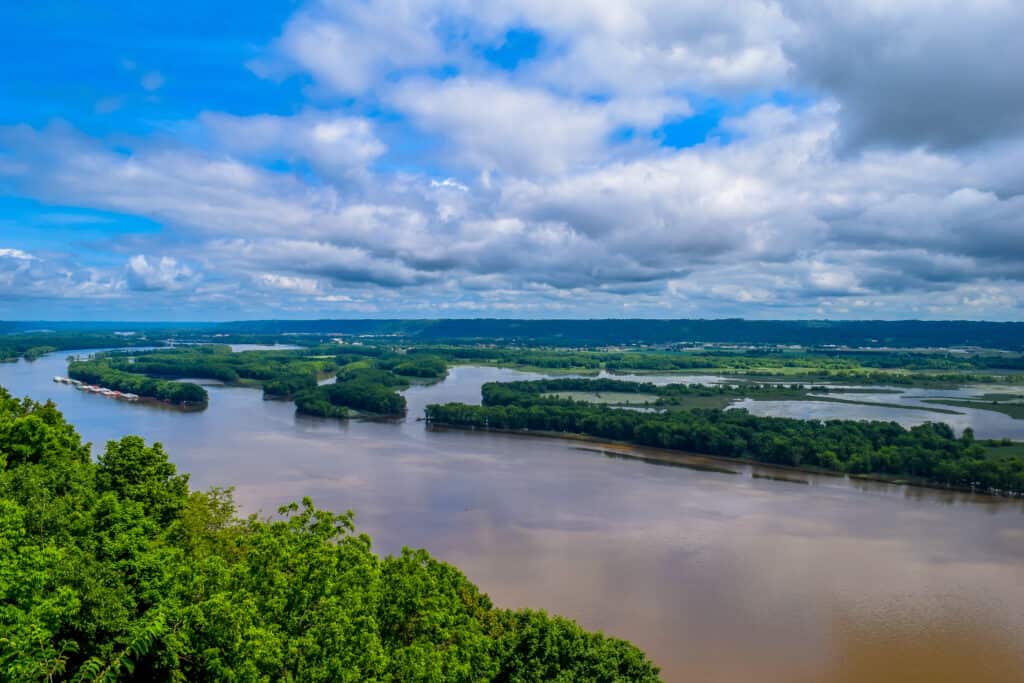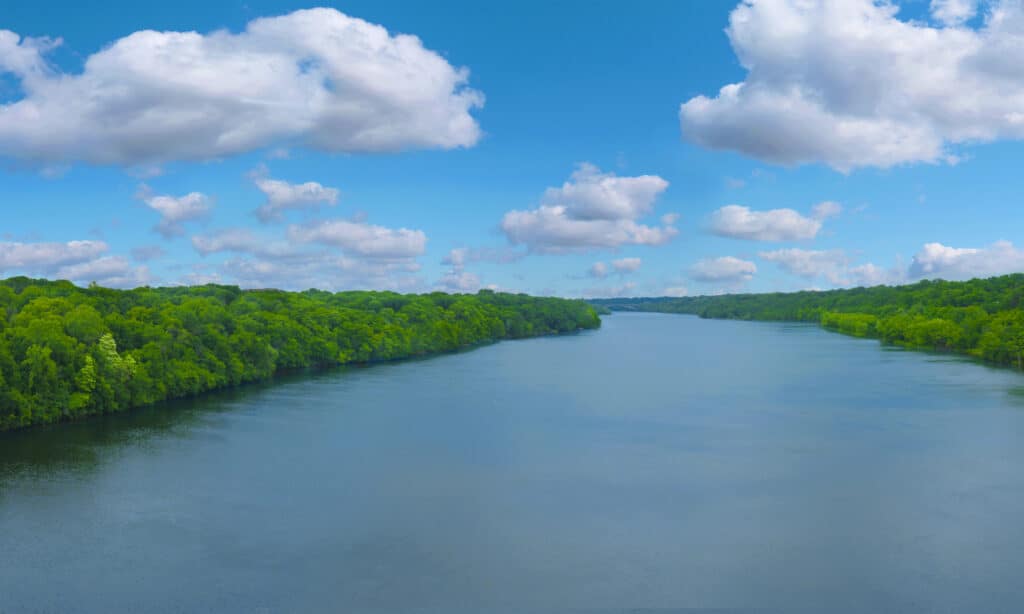The Mississippi River is close to 70 million years old. In 1519, Spanish cartographer and conquistador Alonso Alvarez de Pineda discovered the mouth of the Mississippi River. This made him the first European on record to reach the river, and his discovery introduced humans to another wonderful gift of nature.
For a while, humans were content to take what the river gave when it gave it. They accepted its water and flood and didn’t attempt to change it. However, with civilization came a number of changes. Knowledge increased, so humans decided to tame the Mississippi. Rather than accepting, we began to take, and as a result, the Mississippi River Delta is dying.
What Is A Delta?

A landform created by a river as it flows into the sea is a delta.
©lavizzara/Shutterstock.com
A delta is a landform created by a river as it flows into the sea. How? Well, the rivers are full of sediments such as sand and other solid material. As the river nears its exit while flowing down into the sea, it begins to slow down. Consequently, the sediments begin to drop to the bottom of the river.
This process is repeated until this sediment mound begins to rise. Soon, this mound becomes a small obstruction in the river, and the river must part around the delta to continue flowing while continually feeding it with sediments. This natural phenomenon created the Mississippi River Delta, a 3-million-acre (4,700 square miles/ 12,000 square kilometers) wetland area.
Why Is The Mississippi River Delta Dying?

The levees built to solidify the land and stop floods have stopped the Mississippi from feeding the delta with sediments.
©EyeTravel/Shutterstock.com
Deltas need to continue receiving depositions of sediments to keep up with the water flowing around them. This isn’t usually a problem because unless something tampers with the river, it will continue to deposit sediments. However, when humans settled on these deltas, they began to tamper with the river to utilize it better. One major problem that people faced was flooding. With nothing to stop the river, it often crept into living areas, resulting in the loss of property.
To combat these difficulties, humans decided to build levees. Levees are barriers that stop rivers from overflowing. Of course, this wasn’t an easy job, and it was started at various parts of the river. Building these levees wasn’t only to stop flooding but also to stabilize the muddy delta land.
However, the levees stopped the flow of water, thereby stopping the deposition of sediments into the delta. In addition, the dams and reservoirs in the Mississippi’s upper drainage basin also stopped the deposition of sediments.
This isn’t the only threat the river faces. More than 9,300 miles of pipelines and 10 major canals have been placed in the Mississippi, and the pipeline installation and dredging have resulted in the loss of wetlands. From 1956-1978, they resulted in the loss of about 30 to 59% of wetland in Louisiana. If nothing is done, more and more parts of Louisiana will be covered with water until the delta is no more.
The Plan To Redirect The River
This problem has not gone unnoticed. The state of Louisiana proposes to fix the problem by removing some of the constrictions placed on the river. They plan to do this by opening a gap in the levee. This will allow the river to wash up more sediment to the delta. If the US Army Corps of Engineers gives approval, work is expected to begin as soon as 2023.
But At What Cost?
The decision to open a gap in the levee to cause a diversion is not without harsh critics who argue that opening the gap is not the right solution. Among these critics is Louisiana’s $1.3 billion shrimp economy, which accounts for 15,000 jobs. There is a possibility that the redirection could reduce salt levels in the waters near Venice, and this will push the shrimp out and into the Gulf of Mexico. Of course, this will also happen if nothing is done and the delta sinks, but one of these will happen much faster.
Louisiana is 52,378 mile-square in size and has lost 5,000 square miles in the last 80 years. Experts approximate that by 2100, the Mississippi delta could have lost 5,212 square miles. If nothing is done, the wetland will continue to deplete at similar rates, but if a gap is opened, the loss of livelihood could be immediate. And so, shrimpers feel that they are being offered a quick death or a slow one.
Another major group of critics of the plan to redirect the river is local landowners. The original reason for the erection of the levees was to stop flooding. With these levees being removed, several parts of the delta could get flooded. Besides, the landowners don’t exactly trust the government and corporations. In the 1920s, oil was discovered in southern Louisiana.
As a result, surveyors and corporations made their entrance. Many Indigenous residents who couldn’t read English signed away their ownership, believing they were affirming ownership of their properties. Today, corporations own more than 90% of southern Louisiana. It’s easy to see why they lack the necessary trust to support such a decision.
Louisiana’s bottlenose dolphins, an endangered and federally protected species, are another reason many criticize the plan to redirect the Mississippi. More than 2,000 dolphins live in Barataria Bay, and there is the possibility that the reintroduction of freshwater into the bay will be detrimental to the dolphins, which are saltwater creatures.
It’s Not Just The Delta

The Mississippi River has been named the 6
thmost endangered river in the US due to its high pollution levels.
©Milen Mkv/Shutterstock.com
Mississippi’s delta is not the only part of the river suffering due to human intervention. The river itself has been named the 6th most endangered river in the US due to its high levels of pollution. Pollution from oil spills, fertilizer washed from farmers’ fields, and toxic waste has made many places in the river uninhabitable.
The Mississippi River is an important part of the US economy. It also provides drinking water to many American states and gives life to various deltas. If we intend to preserve the river for generations to come, we must take an active interest in policies that concern the usage of aquatic resources. Raising awareness and volunteering are great ways to make a difference.
Up Next…
How Was The Mississippi River Formed?
Discover the Headquarters of the Mississippi River
5 Invasive Species in the Mississippi River
The photo featured at the top of this post is © Usoltsev Kirill/Shutterstock.com
Thank you for reading! Have some feedback for us? Contact the AZ Animals editorial team.







